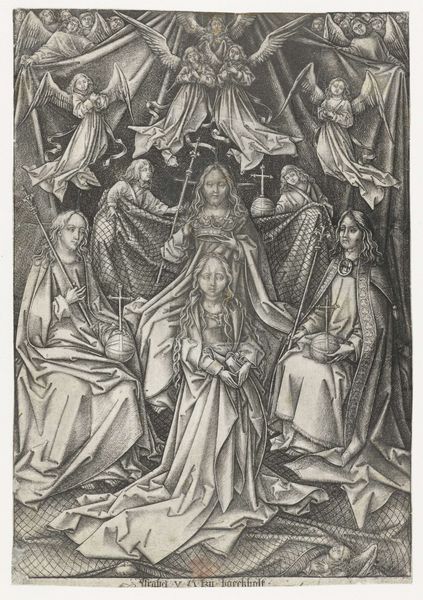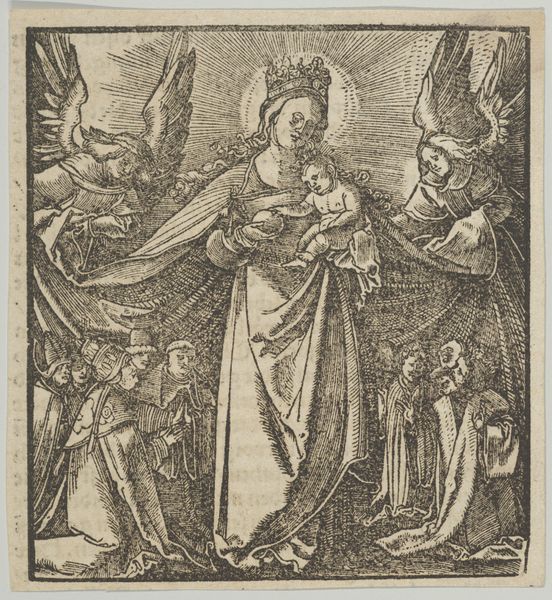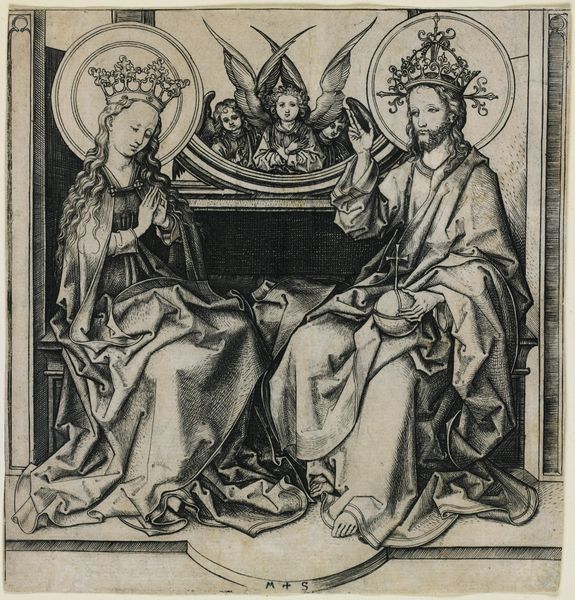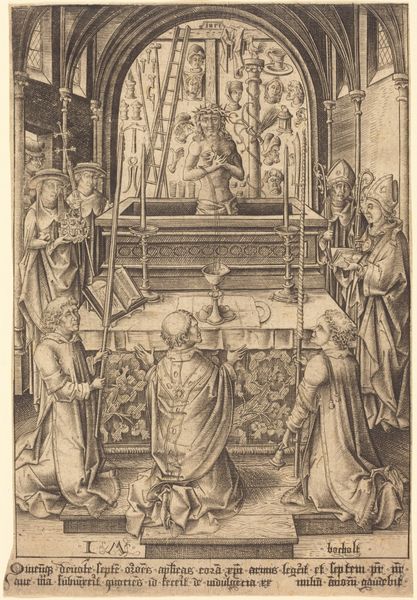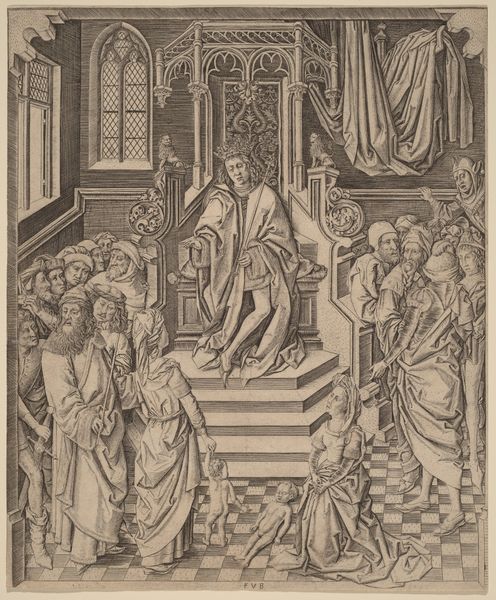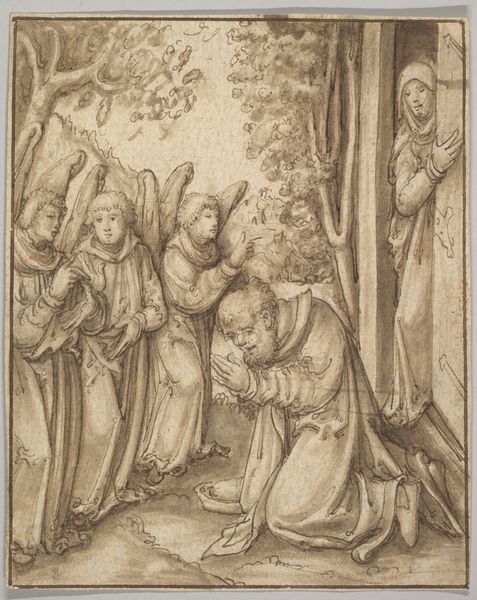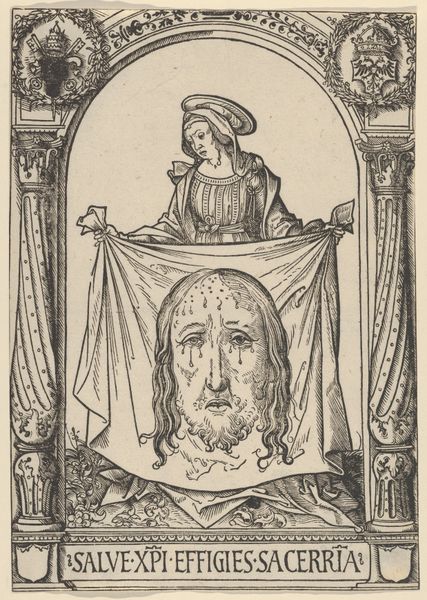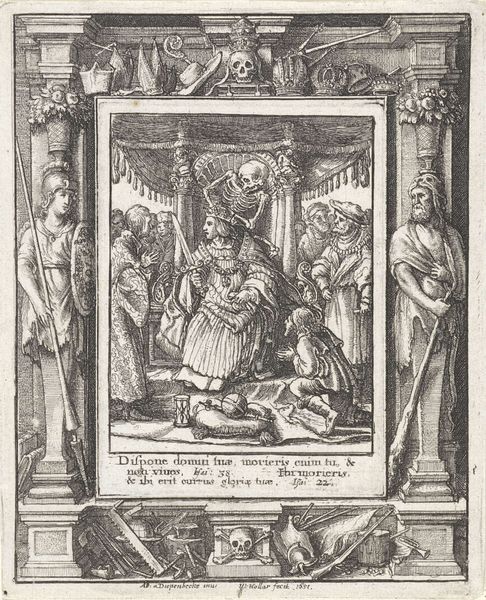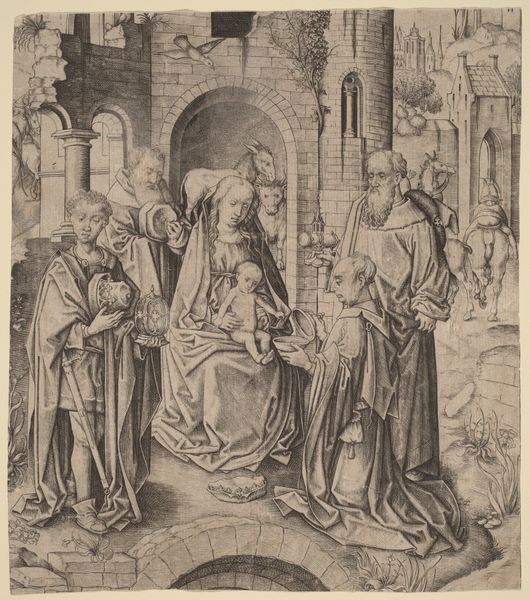
drawing, intaglio
drawing
medieval
intaglio
figuration
Copyright: Public Domain
Monogrammist A.G. made this engraving, Christ Enthroned, sometime in the 16th century. This image of Christ in majesty connects to a long tradition of Christian art that legitimizes earthly power. Notice the visual cues: the angels attending Christ, the orb and scepter he holds, and the crown upon his head. These are all symbols of earthly rulers, and here they are transposed onto the figure of Christ. This conflation of religious and secular authority was characteristic of the Holy Roman Empire. Prints like this one allowed for the mass dissemination of political and religious imagery. They served as propaganda and promoted specific ideologies in a time of religious upheaval. By studying the symbols, artistic style, and historical context, we can better understand the social and institutional forces at play. Research into the printmaking industry, religious history, and political symbolism can help us interpret the meaning and function of this image in its time.
Comments
The Master AG must have spent time in the circle around Schongauer. He produced several finely and carefully executed copies of that master’s successful engravings. Among them is the series of 'Wise and Foolish Virgins' (33762–33771) and the depiction of 'Christ Enthroned' seen here. Flanked by angels drawing a curtain aside, the Redeemer performs a gesture of blessing. This engraving may have formed a cycle in combination with the 'Virgins': the 'Wise' to Christ’s right and the 'Foolish' to his left.
Join the conversation
Join millions of artists and users on Artera today and experience the ultimate creative platform.

